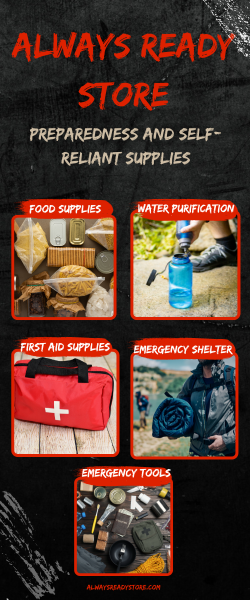Water Procurement
Understanding Water Sources
First things first, finding water in the desert is like discovering gold. You gotta know where to look! Natural sources like streams and rivers can be super elusive. Pay attention to wildlife; they often point you in the right direction. Also, your best bet might be digging in dry riverbeds or checking under rocks—water can sometimes be hiding just out of sight!
Another tip? Look for plant life. Cacti, for instance, are not just beautiful; they can provide much-needed hydration. Just make sure you know how to harvest water safely—prickly things can really ruin your day if you’re not careful!
Remember to be patient and observant. Water flows through nature in mysterious ways, and picking up on subtle signs will make all the difference when you’re parched.
Water Storage Techniques
Once you find some water, it’s crucial to store it properly. I’ve learned the hard way that you can’t just fill up a bottle and call it a day. Use airtight containers if you have them; this can help prevent any evaporation, especially when the desert sun is beating down. I’ve used anything from plastic bags to repurposed soda bottles—it’s all about being resourceful!
It’s equally important to ration your water. This is where keeping track of how much you’re consuming each day comes in. You might feel tempted to chug it all when you’re thirsty, but slow and steady wins the race. Trust me, you don’t want to find yourself running on empty!
I also recommend creating a makeshift shade for your water source if you can’t find a cooler spot. Evaporation is a sneaky thief, especially in the desert. Shielding your water from direct sunlight can stretch your supply much longer.
Thank you for reading this post, don't forget to subscribe NOW for FREE!
Desalination Techniques
Okay, so say you’re lucky enough to stumble upon saltwater—don’t lose hope! Though it’s not drinkable, I once learned a nifty trick for desalination using simple materials. You can create a solar still with just a container and some plastic wrap. Place the water in a basin, cover it tightly, and place a small cup or container in the center. The heat from the sun will evaporate the water, and as it condenses on the wrap, it will drip into your cup. Voila! Fresh water!
This technique can take time, but if you’re out there for the long haul and find yourself in a jam, it can be a lifesaver. Just keep an eye on it and adjust the setup as needed during the day for maximum sunlight exposure!
But don’t forget, though desalination might sound like a miracle, it’s not a substitute for finding fresh water sources. Use it as a backup plan—there’s no reason to get stuck relying on just one method out there!
Navigation Skills
Using Natural Landmarks
Getting lost in the desert is one of the scariest feelings I’ve ever experienced. One of the best hacks I’ve picked up is using natural landmarks to navigate. Mountains, rock formations, and even the sun’s position can guide you. The way the sun travels across the sky is like a giant compass—the east is where it rises, and you can estimate south and north from there.
During my desert adventures, I always try to familiarize myself with the terrain during daylight. Not only does this help with navigating back to safety, but it also helps me to spot other features that can aid my journey. Keeping track of where I’ve been relative to prominent landmarks has saved my butt more than once!
Another strategy is to create a mental map of your area. Draw mental notes and remember the unique characteristics of a region improves your sense of direction the next time you’re wandering around—seriously, it’s a game-changer!
Using the Stars for Navigation
When the sun sets, the desert becomes a different world. And guess what? The stars can be your best friends. I’ve learned to navigate using the North Star, which is visible in the northern hemisphere. If you can spot it, you’re heading north—what a relief! Knowing basic constellations can really help you find your way home when everything else feels disorienting.
In addition to the North Star, I also keep an eye on the moon. The phases can offer hints about what direction you’re heading at night. Remember, my friends: always have a little stargazing knowledge up your sleeve—it’s not just for romantics!
Plus, who doesn’t love a good night sky? Keeping your eyes on the stars can lift your spirits even when you’re feeling lost. It’s a great reminder of how small we are, and sometimes, that perspective can help you find your footing again.
Using a Compass
If you’re not a celestial navigator, no worries! Carrying a compass is a no-brainer for anyone adventuring in the desert. I always have one handy, and it’s saved me from making silly mistakes. Just make sure you know how to use it—it’s not just a pretty piece of gear!
To use it effectively, hold it level and wait for the needle to stabilize. Once it points north, you can determine your headings. Remember to keep away from any metal objects or electronics—they can throw the readings off!
Additionally, I like to practice using my compass regularly. Familiarity with your navigation tools builds confidence and can make all the difference when you’re feeling disoriented. So whip it out and give it a spin!
Building Shelter
Finding a Suitable Location
If you ever find yourself in a situation where you need to shelter from the blistering sun or sudden storms, location is key! I’ve learned that finding shade is paramount. The best spots tend to be under rock outcroppings or large shrubs. These spots not only provide shelter but also help keep the temperature down.
Before settling down, always survey the area for potential hazards. Is a flash flood a possibility? Or do you have any concern about falling rocks? It’s best to pick a safe spot over one that looks comfy but is actually kind of dangerous!
And don’t rush it either—taking the time to find the right place saves you time and energy while you relax in your makeshift home. In the end, comfort and safety should always be your goals.
Building the Shelter
Once you’ve found your spot, it’s time to work your magic! I usually start with whatever materials are available—branches, stones, or even bundled-up leaves can work wonders. I like to construct a lean-to style shelter; it’s pretty straightforward and provides ample coverage from sun and wind.
Using natural materials not only blends your shelter into the environment but also makes it easier to find resources you need. Stack branches against larger trees or rocks, ensuring it’s sturdy enough to handle your weight. It’s like building a little fortress!
When building, consider the wind direction and where you want the entrance. You’re aiming for a cozy spot that stays cool without too much hassle. And remember: the more effort you put into building your shelter, the more comfy your stay will be!
Insulating the Shelter
Now that your structure is up, it’s time to think about insulation. In the desert, temperatures can swing wildly between day and night, and trust me, you want to be comfortable! I often add a layer of leaves or grass inside to help with insulation. This not only adds a bit of warmth but also makes the ground feel nicer.
Another trick? Create a windbreak with stones or vegetation around your shelter to help block out any cold drafts or sweltering winds. It’s about making your space as cozy as possible under the circumstances!
Lastly, when the temperature drops, I often use extra layers of clothing or a sleeping bag if I’ve got one handy. Heat retention is key for a good night’s sleep, and trust me, it can mean the difference between feeling rejuvenated or wiped out the next day.
First Aid Essentials
Identifying Common Injuries
In the wild, anything can happen, and knowing how to handle common injuries is crucial. I’ve experienced everything from scrapes to sunburns, and being prepared can save yourself a lot of trouble. Know your basic first aid—understanding how to treat a wound can prevent infection, which is a major concern out there!
Also, make sure to keep an eye out for signs of heat exhaustion. Symptoms can include dizziness, rapid heartbeat, and excessive sweating. If you spot these in yourself or a partner, you need to take action immediately—get to shade, hydrate, and cool down!
Being aware of snakebites is also a must, especially in desert areas. If you or someone you know gets bitten, remain calm and seek help as quickly as possible. The less movement, the better, as it slows the spread of venom!
First Aid Kit Essentials
When I pack, I don’t leave home without a first aid kit. Essential items include antiseptic wipes, band-aids, gauze, and adhesive tape. You don’t need a full hospital, but these basic supplies can cover a lot of situations!
Don’t forget pain relievers! Ibuprofen or aspirin can make a huge difference if you encounter discomfort during your adventures. Also, consider adding allergy medication if you’re prone to reactions—you never know when an unexpected encounter with nature might happen!
I always remind myself to regularly check and replace items in my kit. You don’t want to find out that your antiseptic has expired when it’s time to use it. Keeping your kit fresh shows that you’re serious about your safety when hitting the desert!
How to Administer Basic First Aid
Once you’re prepared with supplies, the next step is knowing how to use them! For minor cuts, I wash the wound with clean water, apply antiseptic, and cover it up with a bandage or gauze. It’s a simple yet effective way to reduce infection risks and keep the area protected.
If someone is suffering from heat exhaustion, here’s what I’ve found works best: move them to a shaded area, provide cool water, and even apply a cold cloth to their forehead or neck. Monitoring their condition is essential, and knowing when to seek further help can be lifesaving!
Remember, in any emergency, it’s important to stay calm. Your composure can help ease the panic in others and ensure you think clearly about your next actions. So, take a breath and tackle those challenges head-on with confidence!
Conclusion
Surviving in a desert environment requires knowledge, resourcefulness, and a good bit of strategy. From finding water to navigating by the stars, each skill plays a vital role in ensuring your safety and comfort. With preparation and practice, you can approach any desert trek with confidence.
Frequently Asked Questions
What should I prioritize when preparing for a desert adventure?
Water procurement is crucial—always ensure you have enough water and know where to find more. Navigation skills and shelter-building are also vital components you shouldn’t ignore!
How do I stay hydrated in the desert heat?
Carry enough water and learn how to find additional sources. Rationing your water is also essential; drink small amounts regularly rather than chugging it all at once!
What’s the best way to build a shelter in the desert?
Look for natural shade and materials like branches or foliage. Build your shelter to protect against the elements, and make sure to insulate it for comfort during cold nights!
Are there specific first aid items I should include in my kit for desert survival?
Definitely include antiseptic wipes, bandages, gauze, and pain relievers. Having supplies for heat-related illnesses, like cold packs, is also beneficial.
How can I improve my navigation skills for the desert?
Practice by using natural landmarks and the stars. Carrying a compass and learning how to use it will also help boost your confidence when navigating through challenging terrain!






